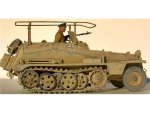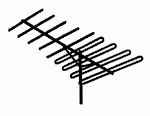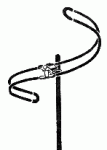German tactics were based on a lot of factors, but don't misunderstand me. The Wehrmacht led the way early on when it came to air-ground integration. Conditions were right for the Luftwaffe for a significant part of the war. Long-lasting air supremacy or air superiority permitted the Luftwaffe to get really good at their job. It could have been better, but despite inter-service rivalry, leadership meddling, and some technological/resource limitations, the Wehrmacht developed some good doctrine. But the tides turned and they weren't able to sustain those conditions. The Allies learned a lot in a short time, and changes in training, tactics, equipment, and conditions on the battlefields ultimately put the Allies in a position to capitalize on air superiority and support ground forces fairly well. My opinion is that neither side fully developed ground-air coordination to the extent they could have. Over time, with alot of experience and advances in technology, CAS evolved into Air-Land Battle, Full Spectrum Operations, and now Unified Land Operations; all of which make superb use of CAS and Close Combat Attack aviation. It works now because we developed the hard-learned doctrine, resource the training and resource the means for multi-echelon communications.
-break-
Antenna design is about a lot of things. For HF, the radiation pattern and efficiency for your frequency and power influence which antenna is right for you. I suspect the downturn at the front of the German cage antennas was more about avoiding obstructions than about radiation pattern. Mobile antennas often must be a compromise between efficiency and convenience. For example, you design the antenna to be easy to erect, easy to maintain, compact as possible, minimally intrusive AND offer good communications. Every mobile antenna design is a trade off between similar factors. Perhaps they decided that particular design was a compromise of good comms and good mobility. Of course I simplified things, and I'm no EE or HAM, but I did stay at a Holiday Inn once.
Edited to add: After reading CARNACs post I feel compelled to also note that I know nothing about WWII German radio sets.












